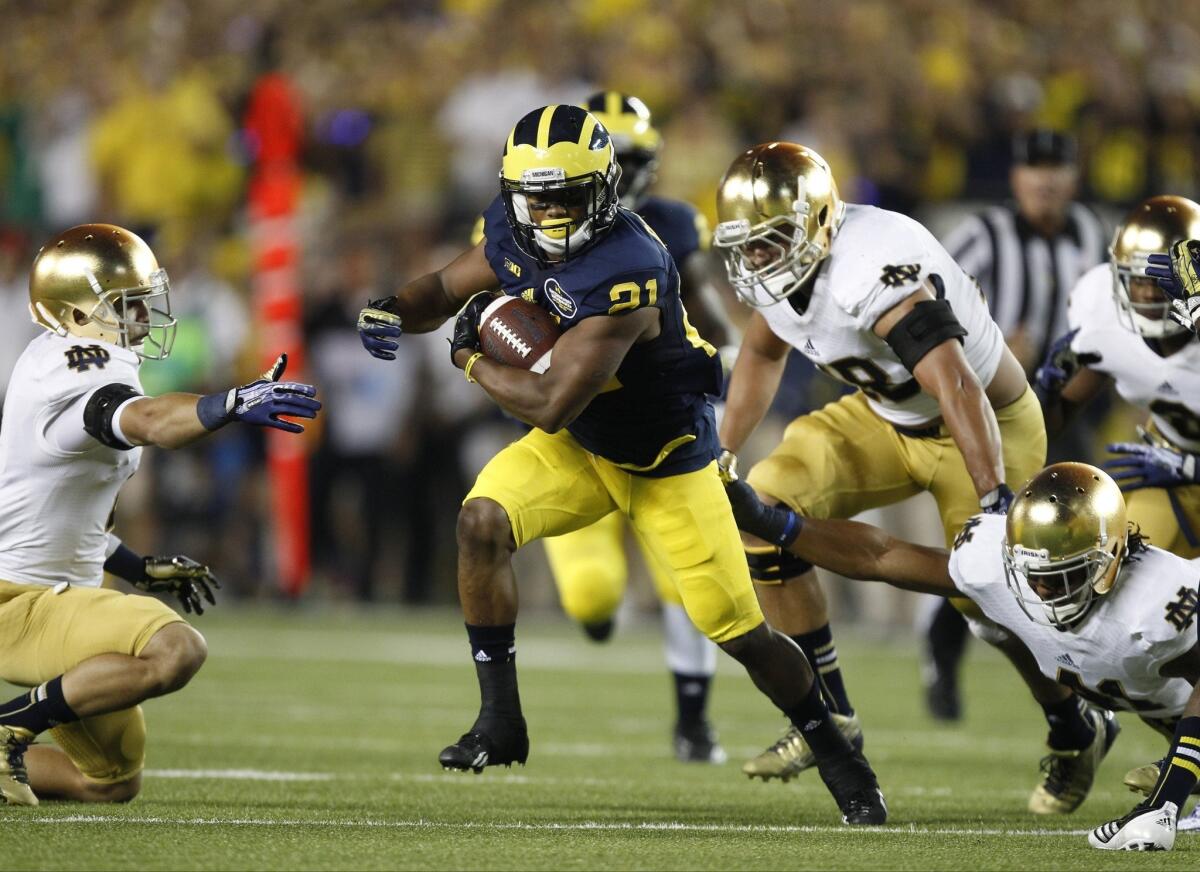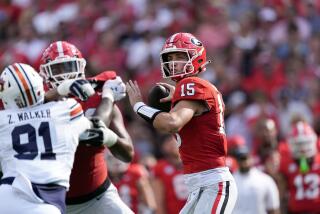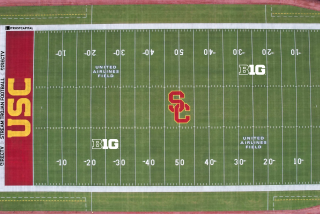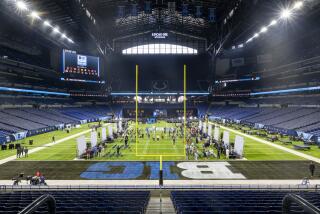NCAA antitrust ruling barely chips at college sports dysfunction

On Sept. 4, 2010, at Michigan Stadium in Ann Arbor, I was part of what the public address announcer proudly told us was the largest crowd ever to watch a football game anywhere in the world, college or pro.
There were 113,090 that day filling the newly expanded “Big House,” as the University of Michigan’s football stadium is known. That was more than its official capacity of 109,901. Only a tiny percentage of us, however, were students; they got some of the worst seats, quarantined behind one end zone and identifiable only as a big splotch of maize-yellow T-shirts.
The rest of the crowd comprised parents, alumni, boosters, corporate executives (ensconced in renovated luxury suites ringing the stands), and other hangers-on hoping to share in or profit from the glory of Big-10 football at Michigan. A few years earlier, James Duderstadt, the university’s former president, had written about his fascination at the volume of Michigan-branded merchandise available, including “maize-and-blue toilet seats” that played the Wolverine fight song when raised.
Few people have the courage to mess with the business enterprise that is big-time university sports. Not the National Collegiate Athletic Assn., which supposedly monitors academic standards for “scholar-athletes” and protects them from commercial exploitation. And not U.S. District Judge Claudia Wilken of Oakland, who handed down a landmark antitrust ruling about a week ago that undermines the NCAA’s ban on paying student athletes what they’re worth.
Many observers say that Wilken threw the NCAA for a big loss. They’re wrong.
It’s true that Wilken chipped away at some NCAA prohibitions on athlete compensation, notably the ban on paying them for the licensing of their “names, images, and likenesses.” (This was the particular target of the plaintiffs, led by Ed O’Bannon, the former UCLA basketball star.) She recognized big-college sports as a business, not amateur competition, which can hardly come as a surprise to the NCAA or university presidents.
But her ruling — which the NCAA plans to appeal — still is shadowed by this outmoded concept as it applies to football and basketball. She says NCAA schools can set up trust funds of several thousand dollars per player per year to hold their shares of the licensing revenue until graduation. She says it’s all right for universities to forbid players from borrowing against their trust fund shares, a restriction devoid of economic logic.
Wilken rejects the plaintiffs’ proposal to allow student athletes to make commercial endorsements, because she accepts that the NCAA and its member schools should protect the students from “commercial exploitation.” In other words, the right to such commercial exploitation should be reserved only to the NCAA and its member schools.
Put it all together, and notwithstanding the hand-wringing (by the NCAA) and glee (by critics of university sports programs), her ruling changes much less than either side thinks.
Throughout its history, the NCAA has relied on a “malleable” definition of “amateur,” in Wilken’s understatement. For example, an athlete who receives a federal Pell grant that raises his total student aid above the cost of attending school, including laundry, travel, and incidentals not covered by athletic scholarships themselves, is still considered an amateur — but one who rejects the Pell grant yet accepted the same sum from licensing would lose his amateur standing.
Such an inconsistency, she writes, is “not indicative of ‘core principles.’” The NCAA’s rules limiting athletic scholarships to less than the actual costs of attending college simply aren’t justified by its own definition of “amateur.” Wilken tries to split the difference, overturning some of the more glaring inconsistencies but preserving others that make scarcely more sense.
The problem may be that Wilken is trying to graft the motivations driving athletes in smaller sports that don’t typically lead to pro athletic careers — swimming, lacrosse, rugby, badminton — onto football and basketball programs, which are entirely different species.
The reality of football and basketball players graduating into professional athletic careers makes a mockery of the NCAA’s assertion, in its Division-I manual, that “student participation in intercollegiate athletics is an avocation.”
Nobody believes that, least of all the administrators at Division-I schools. Back in 2000, Michigan’s Duderstadt — who also had served as chairman of the Big-10 athletic conference — wrote that those two sports had become irreversibly “transformed into big-time show business.” As a result, their objectives “have become market share and commercial value, and the welfare of their players as students has been largely ignored.” (Judge Wilken quotes Ed O’Bannon as feeling like “an athlete masquerading as a student” during his UCLA years.)
Big universities have allowed themselves to become minor league farm clubs, providing the NFL and NBA with roster-ready talent for free. The universities get publicity and contributions, but it’s a Faustian bargain, because their academic responsibilities are hopelessly irreconcilable with the role of athlete factories. The elevation of football and basketball programs has produced embarrassing scandals that have brought down entire university administrations (hello, Penn State) and tarnished their claim to be models of principled behavior and integrity (hello, USC).
Duderstadt’s prescription was simple albeit, as he acknowledged, “draconian”: divorce the football and basketball programs from the universities. Let the sports programs “become truly independent and professional activities.” He cites one proposal to create a new pro league for younger players. The athletes would be paid like minor leaguers, coached by professionals on teams openly affiliated with the big leagues. Colleges could still have football and basketball, but only in true amateur terms, without athletic scholarships and with participants who genuinely met admission standards.
Wilken’s ruling, by contrast, tries to have things both ways. She ridicules the NCAA’s assertions that limits on athlete compensation are crucial to preserve popularity with the fans, competitive balance, and the educational component in the life of the “student-athlete,” whatever that creature is.
Yet her prescriptions still are based on the assumption that big-time football and basketball are essential elements of the university experience. She has moved the goal posts on the compensation of these players, but what’s really needed is to knock them over.
Of course, Wilken wasn’t asked to overturn the entire NCAA. Big-college football and basketball each have become a business, pure and simple, and the only way to end what has become a giant con game is for the NCAA to get out of the business.
Michael Hiltzik’s column appears Sundays and Wednesdays. Read his blog, the Economy Hub, at latimes.com/business/hiltzik, reach him at mhiltzik@latimes.com, check out facebook.com/hiltzik and follow @hiltzikm on Twitter.
More to Read
Inside the business of entertainment
The Wide Shot brings you news, analysis and insights on everything from streaming wars to production — and what it all means for the future.
You may occasionally receive promotional content from the Los Angeles Times.











